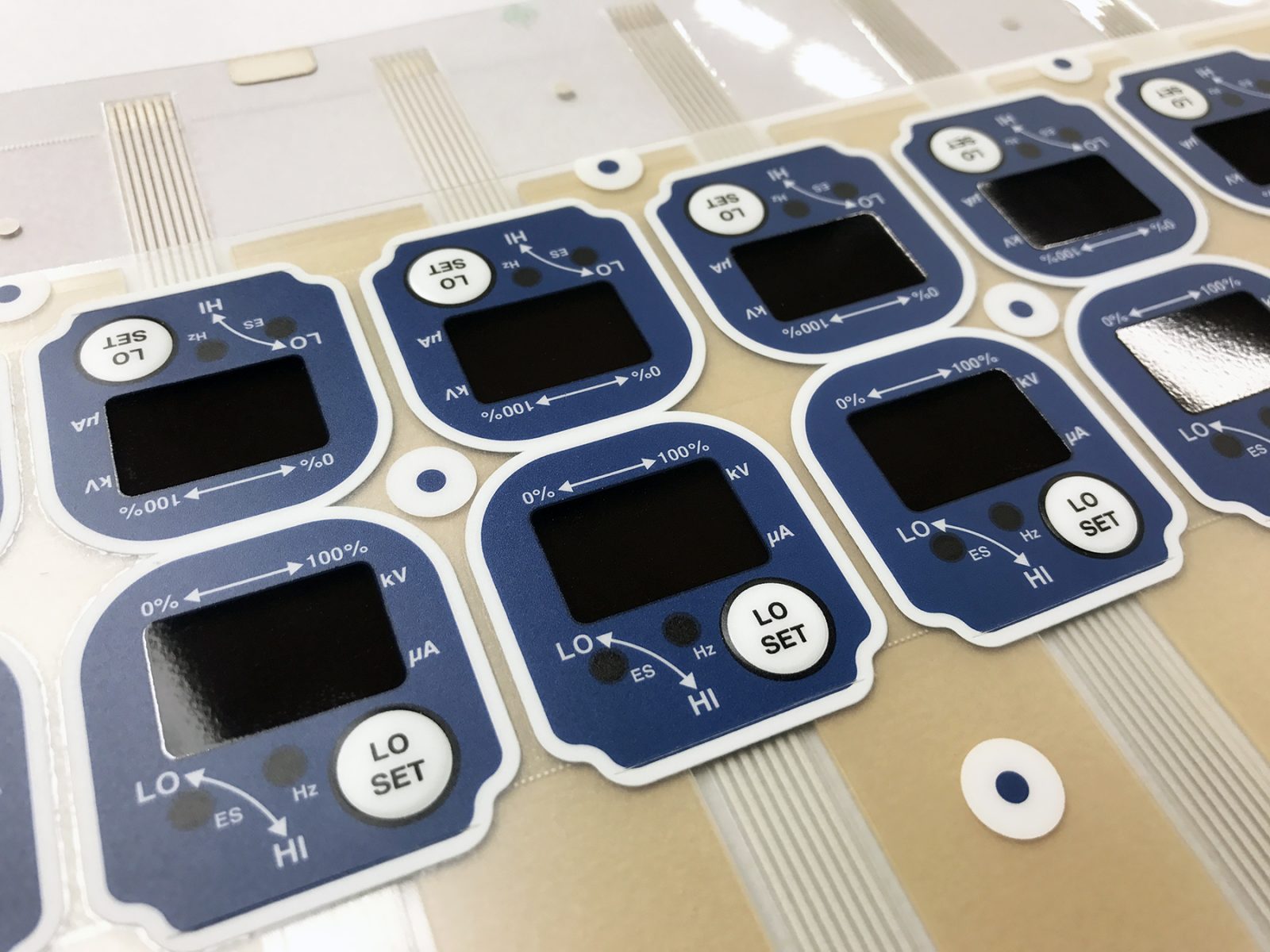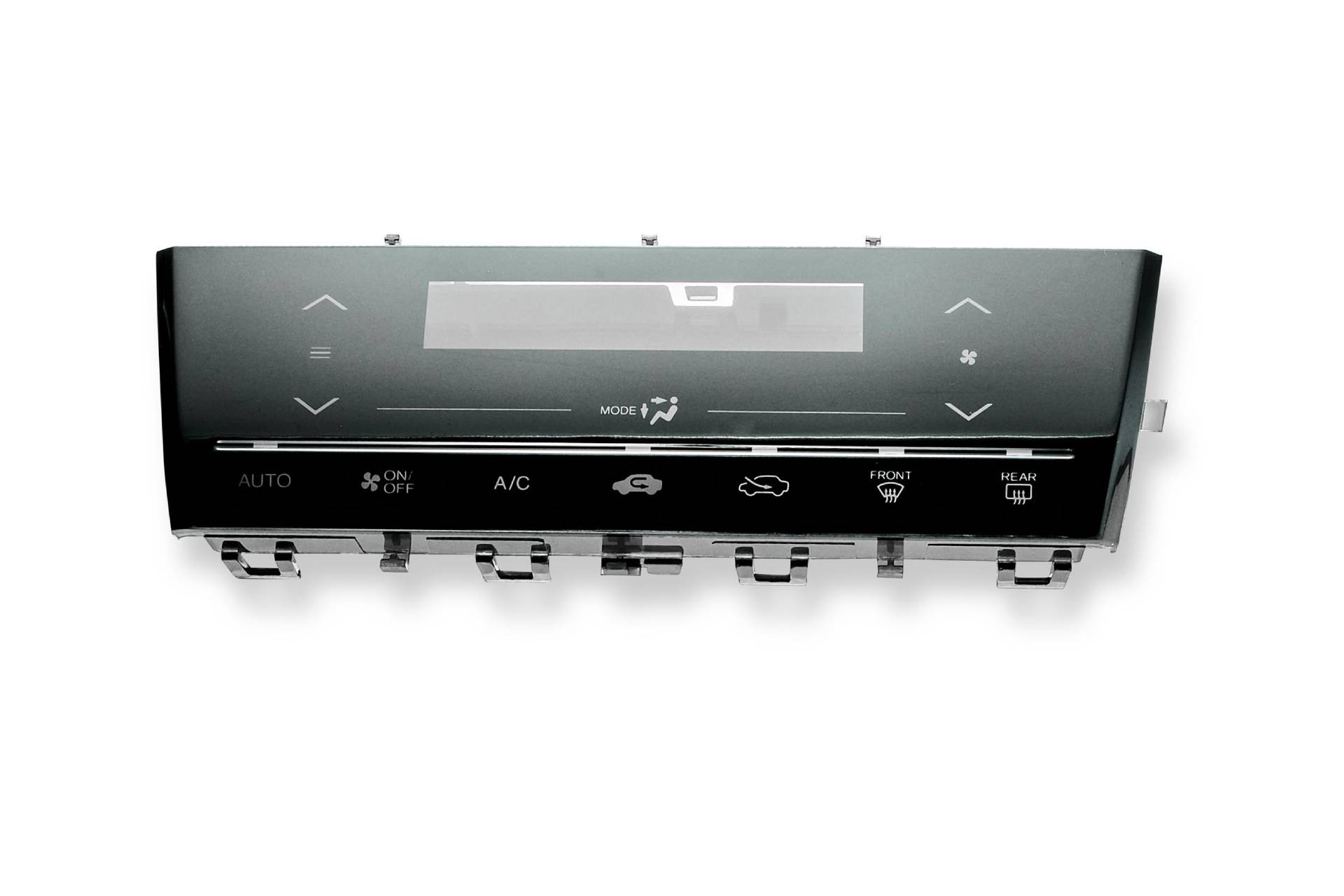Working with a certified membrane switch manufacturer ensures alignment with industry standards.
Working with a certified membrane switch manufacturer ensures alignment with industry standards.
Blog Article
What to Try to find When Selecting a Membrane Layer Switch Over for Your Job
When you're picking a membrane button for your task, a number of crucial aspects come into play. You'll require to assume concerning the products, style, and how well it lines up with your brand name.
Recognizing Membrane Layer Change Components
When you dive right into the globe of membrane layer buttons, it's crucial to comprehend the key components that make them work. Beneath that, the spacer layer warranties there's sufficient distance in between the circuit and the overlay, enabling the button to turn on without constant pressure.
The circuit layer, usually made from published conductive inks, creates the electric paths. When you press a button, the circuit closes, sending a signal to the device. Recognizing how these layers interact helps you pick a membrane switch that's trustworthy and fits your job demands. Pay very close attention to the thickness and material of each layer, as these elements affect durability and capability in different atmospheres.
Product Option and Its Influence
Picking the ideal materials for your membrane button can substantially influence its performance and durability. The choice of substratum, usually polyester or polycarbonate, affects resilience and flexibility. Polyester is much more abrasion-resistant, while polycarbonate supplies better clarity and strength.
Following, take into consideration the adhesive. It needs to withstand ecological variables like dampness and temperature changes. A solid adhesive assurances that your membrane layer button stays intact over time.
Do not ignore the graphic overlay. The printing method used, whether silkscreen or electronic, impacts the switch's appearances and long life. High-quality inks will resist fading and scraping, maintaining a specialist appearance.
Finally, think of environmental problems. If your device will be subjected to severe chemicals or extreme temperature levels, select products made to sustain these obstacles. Your options in materials will inevitably determine the switch's reliability and customer complete satisfaction.
Style Factors To Consider for User Experience
Choosing the ideal materials lays the structure for a successful membrane layer button, but the design also plays a substantial function in customer experience. You'll wish to review just how the layout affects functionality (membrane switch manufacturer). Maintain switches and icons instinctive and well-spaced, making it simple for individuals to browse without complication

Color and comparison are also vital; assurance that your layout is visually enticing but still useful. High contrast assists individuals quickly recognize buttons, specifically in low-light conditions.
Last but not least, assess the general aesthetic. A streamlined and contemporary layout can boost individual understanding and make your product much more appealing. Balancing performance with an interesting style will result in a far better user experience and eventually, a more successful item.

Environmental Factors and Sturdiness
When selecting a membrane switch, you need to take into account how it'll do in different atmospheres. Aspects like temperature level resistance, dampness and chemical direct exposure, and mechanical wear can considerably affect its toughness. Comprehending these aspects will certainly help you choose a switch that withstands your particular problems.
Temperature Level Resistance Demands
As environmental conditions can differ commonly, comprehending temperature resistance is essential for ensuring the longevity of your membrane button. Make sure to examine the specifications of the materials utilized in the button, like the sticky and overlay, as they straight impact efficiency. By picking a membrane switch with adequate temperature level resistance, you'll boost its life expectancy and preserve performance in difficult settings.

Wetness and Chemical Direct Exposure
Wetness and chemical direct exposure can considerably influence the performance and long life of your membrane switch, so it's important to recognize the setting in which it will certainly be utilized. If your job involves high moisture or exposure to fluids, try to find protective finishings and sealants that can boost resistance to wetness. Additionally, consider the types of chemicals your button may come across. Specific materials can break down when subjected to solvents, oils, or severe cleaners. Choosing the ideal materials, like polycarbonate or polyester, can help withstand these elements. Always get in touch with the producer's specs for chemical compatibility to assure your membrane button keeps its capability in time. By prioritizing dampness and chemical resistance, you can boost the resilience of your button in challenging settings.
Mechanical Damage
While you might focus on features like looks and capability in your membrane layer button, mechanical deterioration can considerably influence its efficiency in time. Think about just how usually the switch will certainly be pop over here made use of and the environment it'll be in. Frequent pressing can result in destruction of materials, creating issues like tactile responses loss or perhaps switch over failing. Look for models with durable layouts, such as those with safety overlays that resist scratches and put on. Additionally, check for requirements on cycle life, which indicates the amount of presses the switch can manage prior to revealing signs of wear. Selecting a durable button warranties durability and dependability, preventing pricey replacements and downtime in your task. Constantly element in durability alongside aesthetics and capability for peak efficiency.
Modification Options for Branding
When it comes to branding your membrane layer button, personalization choices are essential. You can pick layout components and shades that mirror your brand, in addition to specific logo positioning and dimension to improve visibility. Additionally, selecting the right products and structures can raise the overall appearance and really feel, making your product stand out.
Layout Components and Shades
A large array of layout aspects and shades can make your membrane button not just functional but additionally aesthetically appealing, enhancing your brand name identification. Don't neglect concerning structures; adding a responsive element can boost individual experience and make your button stand out. By attentively picking style aspects and shades, you not only produce a product that looks excellent but likewise reinforces your branding regularly and properly.
Logo Placement and Dimension
After finalizing your style components and shades, the following action is to focus on logo design positioning and dimension. Your logo is an essential element of your branding, so you'll desire it to stand out without frustrating other style elements. Mirror on where your logo will be most visible and impactful; typical positionings include the leading or facility of the button.
Do not forget to contemplate exactly how the logo design straightens with customer communication. This focus to information will improve both functionality and brand name identity in your job.
Product and Structure Alternatives
Selecting the right materials and textures for your membrane layer button can greatly enhance both its performance and aesthetic allure. You'll intend to evaluate alternatives like polyester or polycarbonate, as they supply durability and resistance to put on. The texture of the surface area likewise plays a vital function; smooth finishes give a smooth look, while distinctive surfaces can boost grip and responsive comments.
Tailoring the go to my site products and appearances permits you to show your brand identification efficiently. As an example, you may pick a matte finish to share refinement or a glossy seek a contemporary touch - membrane switch manufacturer. Don't forget shade choices, as vivid hues can make your switch attract attention, while low-key tones can create an extra elegant look
Price vs. Quality: Discovering the Right Equilibrium
When you're managing the alternatives for membrane layer buttons, balancing expense and top quality can feel frustrating. A lower-cost switch could conserve you money upfront, however if it endangers capability, you might face greater substitute costs later.
Seek producers that offer a great mix of cost and high criteria. Research study their reputation and customer reviews to evaluate integrity. Occasionally, spending a little bit extra in top quality materials can conserve you from future headaches.
Additionally, take into consideration the long-term performance and service warranty choices. A a little a lot more costly switch with a solid warranty could prove to be a smarter investment. Eventually, it's about finding that sweet spot where you fulfill your spending plan while assuring your task's success.
Checking and Quality Control Protocols
While you could discover the perfect membrane layer switch design, assuring its high quality with extensive testing procedures is vital for long-term success. Begin by confirming that the producer adheres to market standards, such as IPC/WHMA-A -620, to ensure a trustworthy product. membrane switch manufacturer. You'll intend to look for detailed screening methods, consisting of environmental, mechanical, and electrical evaluations
Ensure the buttons go through toughness testing, simulating real-world use to identify any type of prospective failings. Take notice of the producer's high quality guarantee process, which should consist of regular assessments and audits.

Do not forget to ask for samples and perform your own examinations to confirm compatibility with your job. Take into consideration how frequently the producer updates their procedures; advancement in screening can lead to better high quality. By prioritizing these testing and quality assurance protocols, you'll boost the likelihood of an effective and durable membrane layer switch for your application.
Frequently Asked Inquiries
How much time Does a Membrane Change Typically Last?
A membrane switch normally lasts anywhere from 1 to 10 million cycles, relying on usage and ecological elements. You'll intend to take right into account your details needs to assure it meets your durability requirements effectively.
Can Membrane Switches Be Repaired if Harmed?
Yes, you can occasionally repair membrane layer switches if they're harmed, yet it frequently depends on the degree of the damages. Minor concerns might be reparable, while more significant damage typically needs replacement for proper functionality.
What Are the Common Applications for Membrane Layer Switches?
Membrane layer switches are commonly used in appliances, medical gadgets, and automobile controls. You'll discover them in consumer electronics, commercial tools, and also pc gaming consoles. Their flexibility makes them optimal for various interface and settings.
Are There Specific Qualifications for Membrane Layer Buttons?
Yes, there specify accreditations for membrane layer buttons. Search for UL, CE, and RoHS accreditations to assure security and compliance. These qualifications show the button satisfies market requirements for high quality and ecological safety and security.
Just how Do I Guarantee Proper Setup of a Membrane Layer Switch Over?
To ensure correct installation of a membrane button, clean the surface area extensively, straighten it meticulously, and apply even pressure. Follow producer standards for sticky curing time to take full advantage of sturdiness and functionality.
Final thought
When choosing a membrane button for your job, keep these essential variables in mind: focus on durable products, focus on easy to use design, and consider customization for your brand name. By meticulously evaluating these facets, you'll ensure your membrane button not just meets your project click this link requires yet likewise boosts individual experience and reflects your brand name identity properly.
Report this page